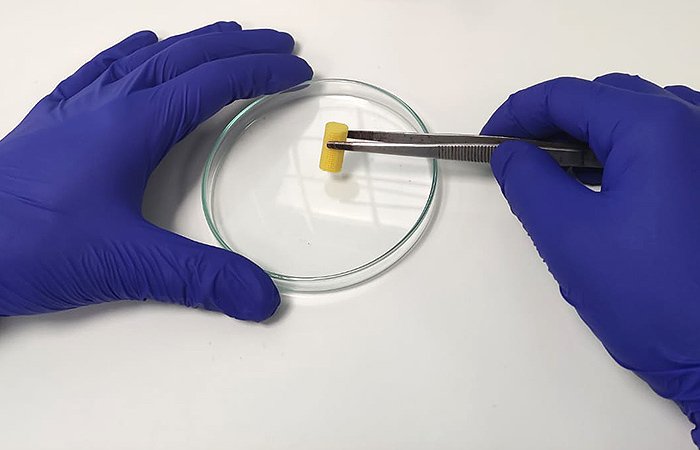Researchers in Spain have developed a new porous material capable of regenerating bones and preventing infections at the same time.
The scientists are from the Bioengineering and Biomaterials Laboratory of Universidad Católica de Valencia (UCV) .
Tailor-made for each case using 3D printing, the biotech creations contain a bioactive alginate coating. This coating induces bone regeneration and destroys the bacteria that sometimes prevent bone formation from being completed.
The material is biodegradable, so it ends up disappearing from the body over time once the bone has been regenerated. The study has been carried out with small animals, in this case rabbits. The next step will be to test larger animals and, eventually, in human beings.
The UCV research was published in ACS Applied Materials & Interfaces, edited by the American Chemical Society (ACS). The work was carried out in collaboration with several institutions.
The team of scientists that created the new material, led by the head of the UCV Bioengineering and Biomaterials Laboratory, Ángel Serrano, also includes Iván Serra (UCV Veterinary Hospital), Mar Llorens (Universidad Politécnica de Valencia), Sanjukta Deb (King’s College, London) and researchers Pablo Vercet and Virginia Chicote.
The study was funded by the State Research Agency of the Ministry of Science and Innovation and by the Fundación Universidad Católica San Vicente Mártir.
Other developments
Serrano’s team also developed the first filters capable of inactivating SARS-CoV-2 and other enveloped viruses, such as influenza, in less than a minute. The technology allowed the creation of FFPCOVID MASK, a mask made and distributed by the Valencian company Visormed.
Serrano has also patented new biodegradable materials with antimicrobial capacity for various biomedical applications. This includes tissue engineering to regenerate bone and other tissues. Another of his discoveries is showing the antibacterial and antiviral capacity of carbon nanofibers in their pure state. These can be used in other materials of industrial interest such as alginate and poly (3-hydroxybutyrate-co-3-hydroxyvalerate), commonly known as PHBV, which are non-toxic, biodegradable, biocompatible and renewable materials.
Partnering 2030: The Biotech Perspective 2023






